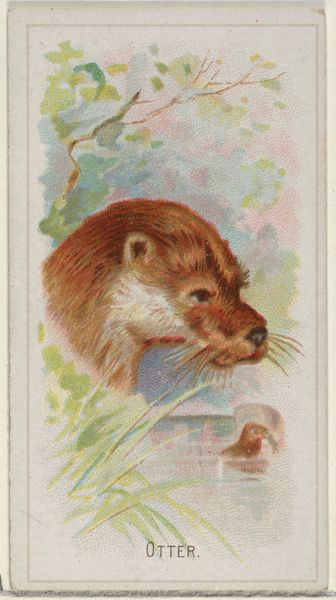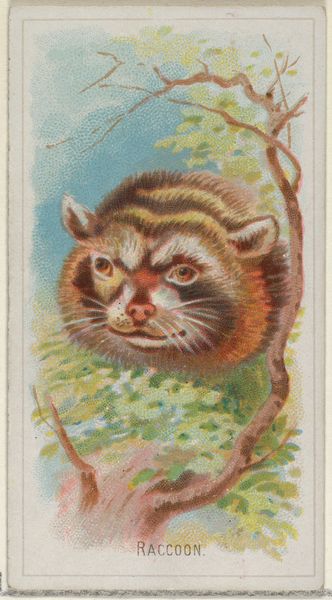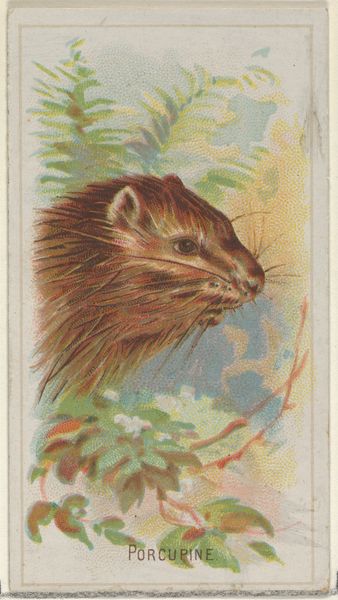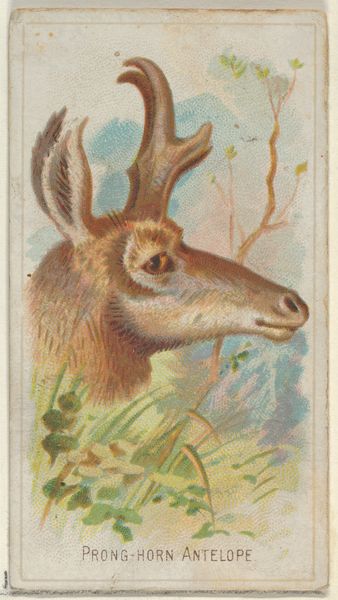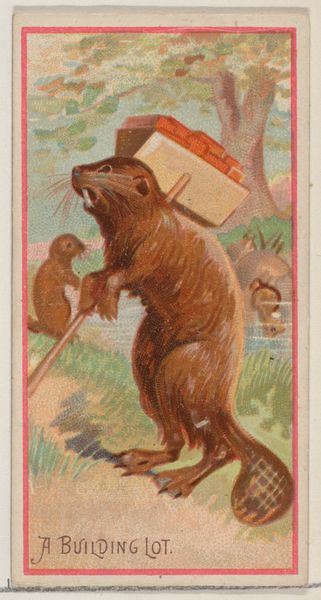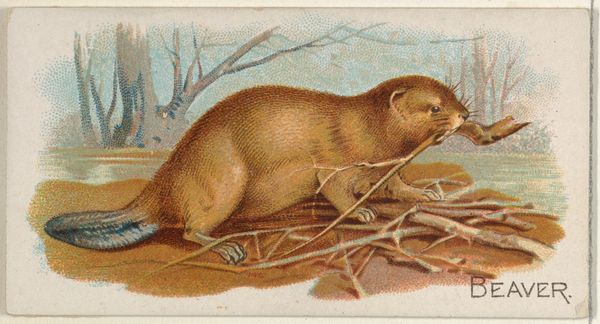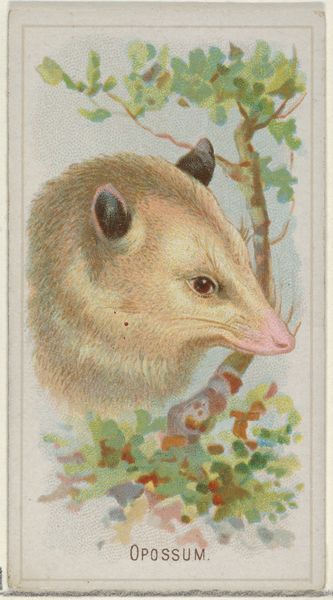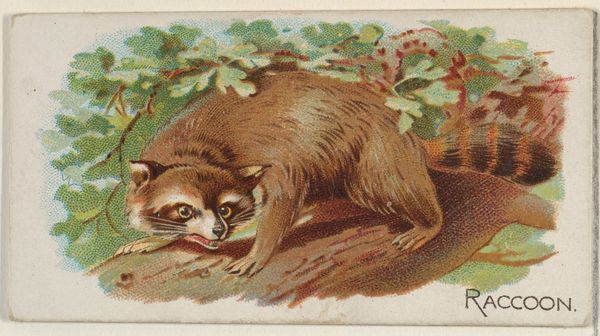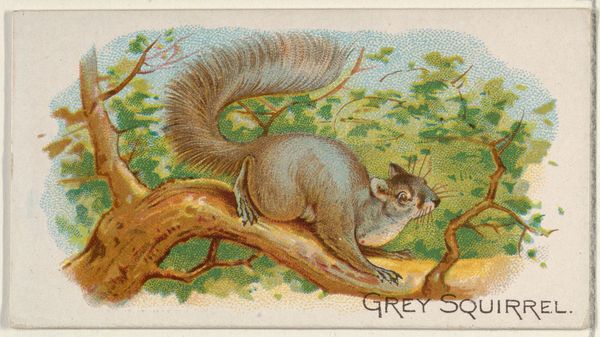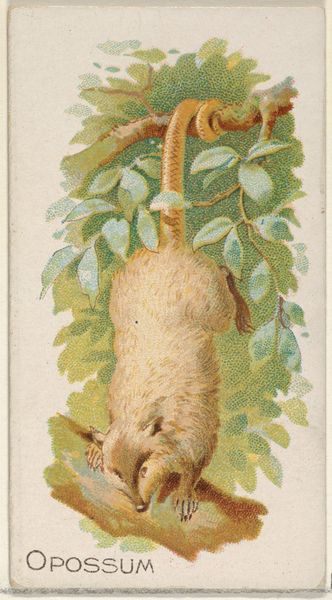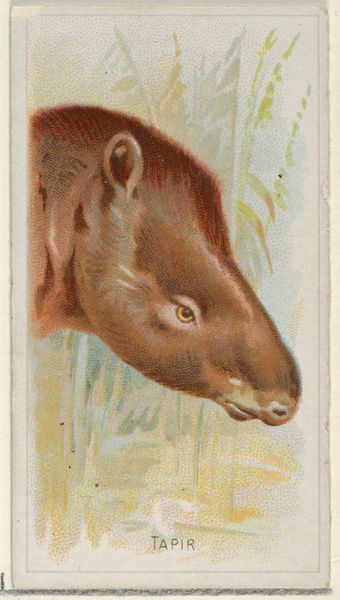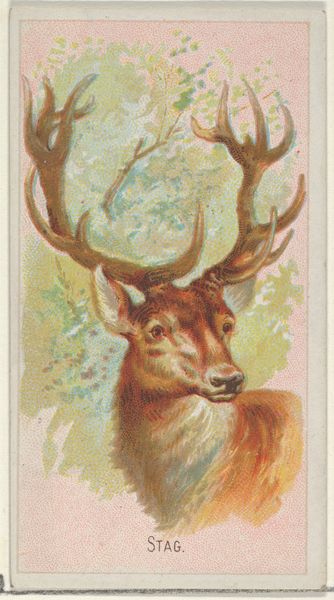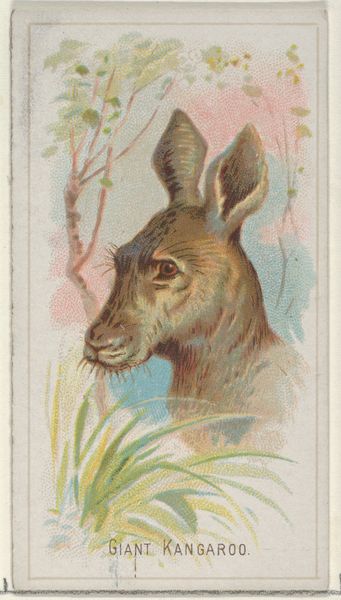
Beaver, from the Wild Animals of the World series (N25) for Allen & Ginter Cigarettes 1888
0:00
0:00
drawing, coloured-pencil, print
#
drawing
#
coloured-pencil
#
narrative-art
# print
#
coloured pencil
#
academic-art
Dimensions: Sheet: 2 3/4 x 1 1/2 in. (7 x 3.8 cm)
Copyright: Public Domain
Editor: So, this is “Beaver, from the Wild Animals of the World series,” made in 1888 by Allen & Ginter. It's a print, created with coloured pencils. It strikes me as kind of quaint, almost like something out of a children’s book. How do you interpret this work? Curator: What interests me most is the means of its production and insertion into a wider network of consumption. This isn’t some fine art print meant for a gallery. It's a mass-produced insert, included in packages of cigarettes. It's academic art at the service of the tobacco industry. Editor: That's a very different way to think about it. I was just seeing a cute beaver! Curator: Exactly! Think about the materials involved, the paper, the ink. Who produced them? What were the labor conditions like? These cards are small objects, but they tell us about late 19th-century industrial capitalism, how companies sought new ways to market their products. Editor: So, the subject matter, the beaver itself, is almost secondary to its function as part of a larger system? Curator: Precisely. Consider the idea of "Wild Animals of the World." It suggests an understanding of and relationship with the natural world predicated upon collecting, owning, categorizing. These images were meant to be traded, collected, possessed, thus flattening any understanding of an animal and reducing it to a mere commercial product. Editor: I hadn't thought of it that way. It is quite unsettling to consider it as a tool of commercial control. I definitely have a broader perspective now. Curator: Seeing it within the material conditions of its creation opens up all sorts of avenues for questioning and analysis, wouldn't you agree? It transcends simple aesthetics.
Comments
No comments
Be the first to comment and join the conversation on the ultimate creative platform.
